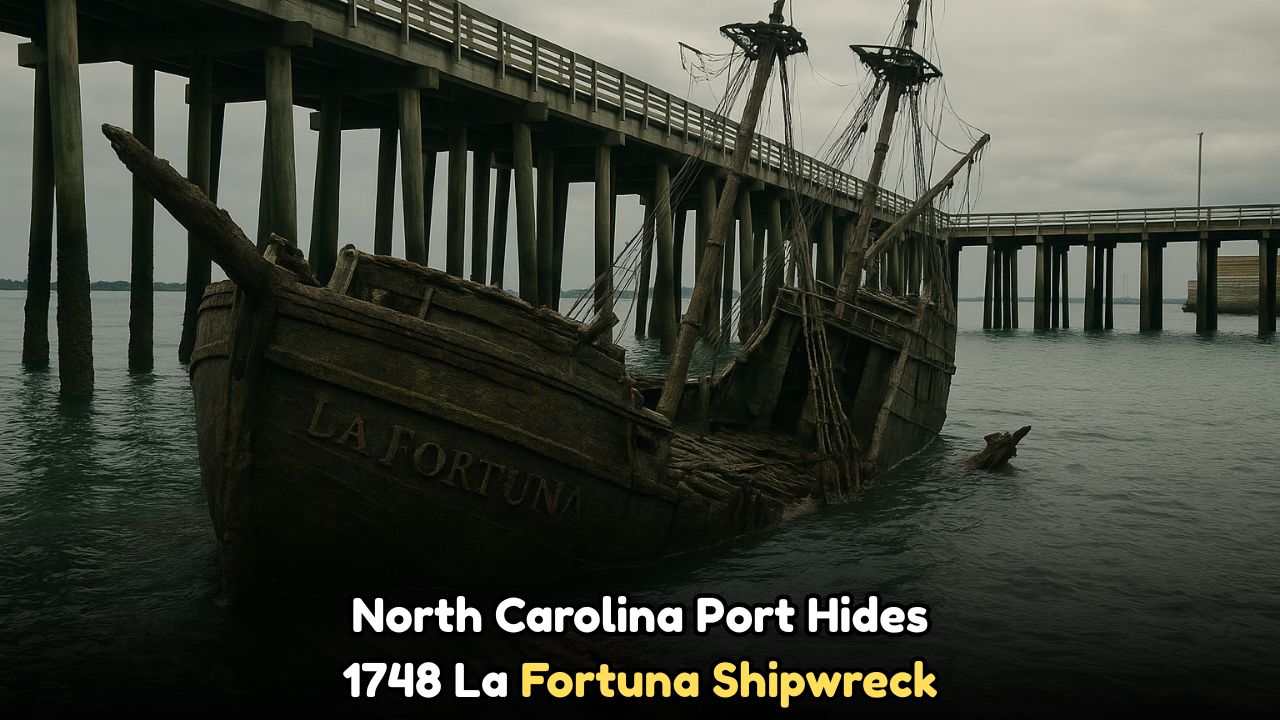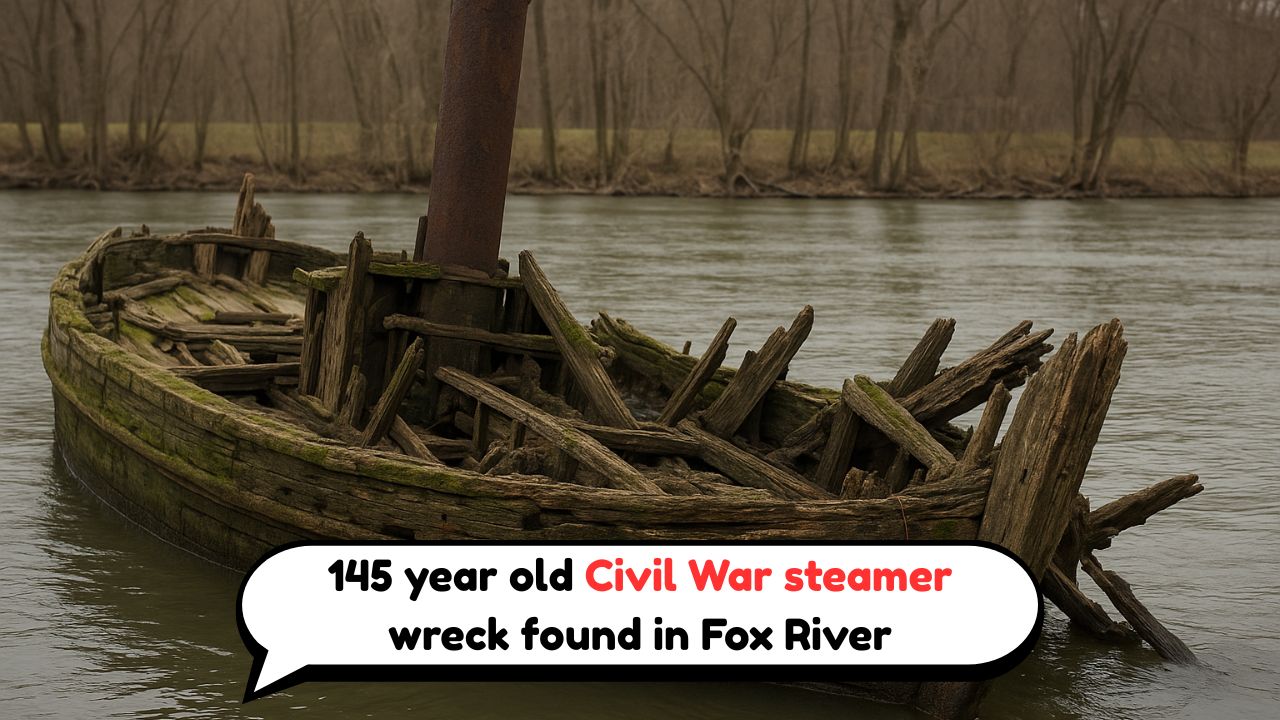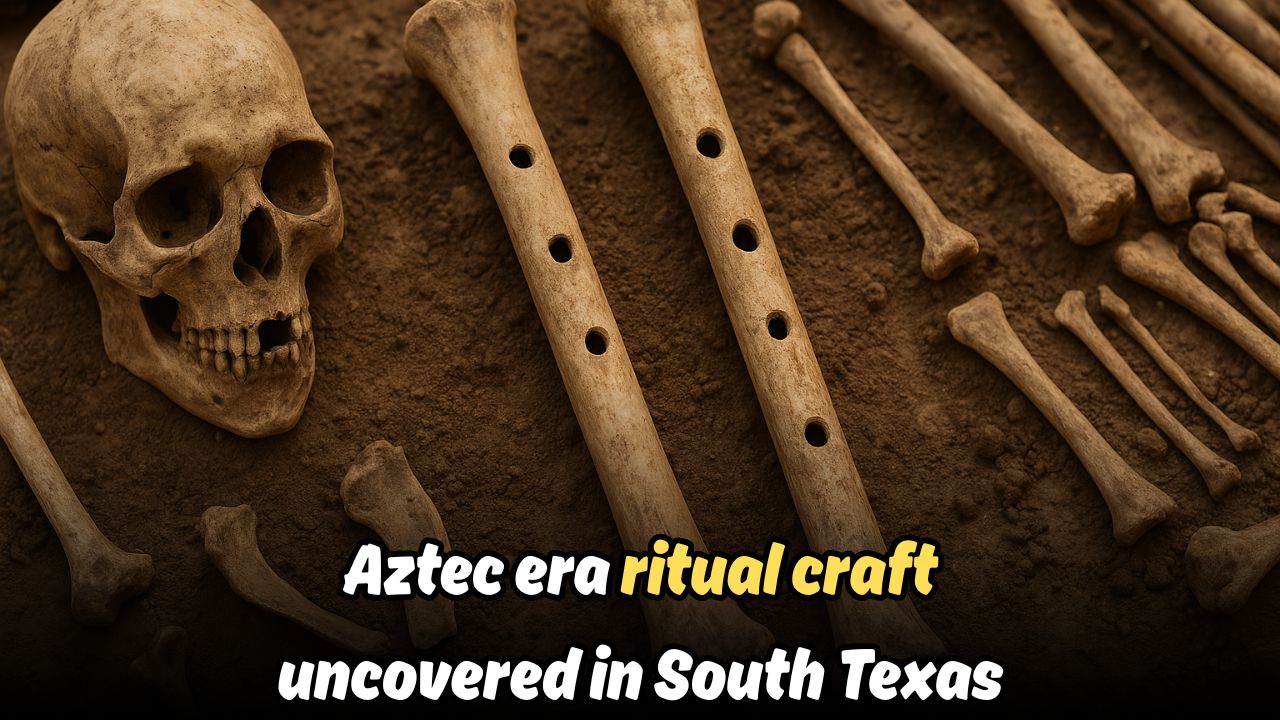Spanish Privateer Shipwreck La Fortuna – The mysterious story of La Fortuna, a Spanish privateer ship that once struck terror along the Atlantic coast, has finally resurfaced after centuries of speculation. In 1748, La Fortuna was caught in a deadly clash near the North Carolina shoreline. The ship, laden with weapons and stolen treasures, met a tragic fate when a massive explosion tore it apart, sinking it deep beneath the waves. For generations, historians and treasure hunters alike debated whether the ship truly existed, and if so, where it had gone. Now, marine archaeologists confirm that the wreck lies beneath a modern port in North Carolina. This discovery not only validates old seafaring legends but also opens a new chapter in maritime history, offering clues about the brutal privateering wars between Spain and Britain during the 18th century. Experts believe the shipwreck could yield priceless artifacts that reveal the hidden world of piracy and naval warfare.
Discovery of the Legendary Shipwreck
After decades of searching, the wreck of La Fortuna has finally been located by a team of divers and archaeologists beneath a busy port in North Carolina. Using sonar imaging and underwater excavation tools, the team identified remains of cannons, anchor chains, and fragments of wooden hull buried deep in sediment. These findings match historical records of La Fortuna’s description and armament, giving researchers confidence in the identification. What shocked the team most was the site’s placement—right beneath an active port where ships have docked for centuries. The discovery not only highlights how history can remain hidden in plain sight but also underscores the importance of preserving maritime heritage. For locals, it is a reminder that their coastal waters once witnessed violent battles that shaped international trade and colonial rivalry. The confirmation of La Fortuna’s final resting place is now being hailed as one of the most significant nautical discoveries of recent years.
The 1748 Explosion and Its Aftermath
The fate of La Fortuna has long been tied to the fateful explosion of 1748. According to accounts, the privateer ship was engaged in a skirmish with British forces when fire reached its powder magazine, triggering a devastating blast that sent the vessel to the depths within minutes. Survivors’ testimonies mentioned a fiery spectacle that lit up the horizon, leaving little more than drifting wreckage. For centuries, the explosion’s exact site remained uncertain, with legends of lost treasure fueling myths and expeditions. The rediscovery of the wreck has now brought closure to this historical mystery. Archaeologists suggest that the explosion preserved much of the ship’s cargo in sealed compartments, which may now provide invaluable insight into 18th-century naval warfare, trade, and privateering practices. This event is a vivid reminder of the volatile nature of sea battles and the risks faced by crews who sailed under privateer flags in pursuit of fortune and power.
What the Discovery Means for History
The unearthing of La Fortuna’s wreck is more than just a thrilling maritime find—it reshapes the narrative of colonial rivalry in the 18th century. For historians, the site offers a rare, untouched time capsule from an era when privateers operated as both pirates and naval auxiliaries. Researchers hope to recover weapons, navigational instruments, and possibly personal belongings of the crew that could shed light on daily life aboard such vessels. The discovery also rekindles public fascination with tales of treasure ships, while providing evidence of the destructive conflicts that defined the age. Conservationists are now pushing for careful preservation to prevent damage from ongoing port activity. Beyond its academic value, the wreck of La Fortuna is expected to become a cultural landmark, sparking renewed interest in North Carolina’s maritime heritage. For the global community, it stands as a testament to how history, even when buried for centuries, finds a way to resurface and tell its story.
Future Prospects and Ongoing Research
Moving forward, marine archaeologists plan to conduct a more detailed excavation of the La Fortuna site. Advanced underwater scanning, robotic surveys, and careful artifact recovery will play a crucial role in piecing together the ship’s full story. Experts predict that cargo holds may contain coins, trade goods, and weaponry that could reveal Spain’s naval strategies during the 18th century. This ongoing research also promises to inspire global maritime studies, drawing comparisons with other famous wrecks like Blackbeard’s Queen Anne’s Revenge. Local authorities are considering transforming the discovery into a heritage tourism opportunity, which could boost North Carolina’s cultural and economic landscape. However, with interest from treasure hunters rising, safeguarding the site from unauthorized dives remains a top priority. As science and history converge beneath the waves, the La Fortuna discovery represents not just the end of a centuries-old mystery, but the beginning of new explorations into the hidden world of privateering, piracy, and colonial power struggles.






